SuperTruck led to real-world truck gains, and more are coming
Back in 2009, even the best trucks on the highway were averaging only six or seven miles per US gallon. Diligent drivers were pushing 8 mpg. Few came anywhere close to 10. Today, good fleet trucks are making 8 mpg (29.4 L/100 km) or slightly better. High-achieving drivers are seeing 10 mpg (23.5 L/100 km), not just on a single leg of a trip but over 30-day intervals. That’s an extraordinary jump in slightly more than a decade.
We owe much of those gains to technology and vehicle designs developed under the U.S. Department of Energy’s SuperTruck program.
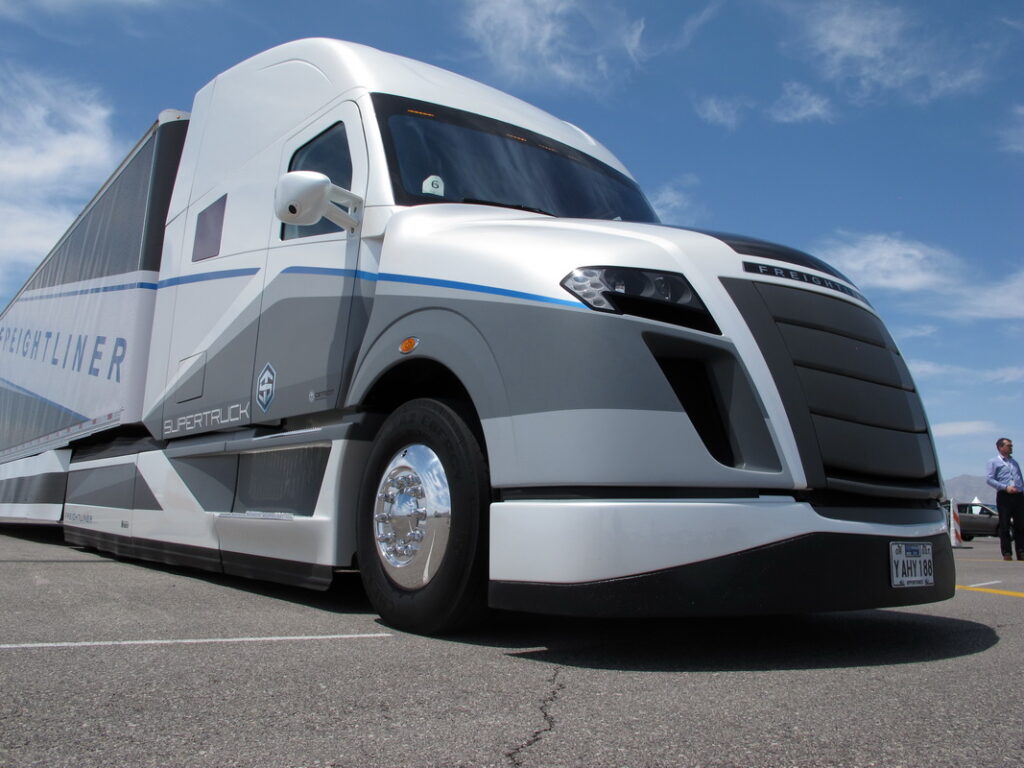
DOE’s Office of Energy Efficiency and Renewable Energy launched the SuperTruck initiative in 2009. The goal of the project was to improve heavy-duty truck freight efficiency by 50% over a baseline 2009 Model Year truck. It directed hundreds of millions of dollars toward research and development of technologies that would improve heavy truck efficiency, such as better aerodynamic equipment, lighter-weight tractors and trailers, more thermally efficient engines, low-rolling-resistance tires, and technologies like turbo compounding and waste heat recovery.
Four teams participated in SuperTruck 1 — Daimler Trucks, Volvo Trucks, Navistar and a joint effort involving Cummins and Peterbilt. Each of the tractor OEM teams partnered with a trailer manufacturer to produce a trailer optimized for fuel efficiency.
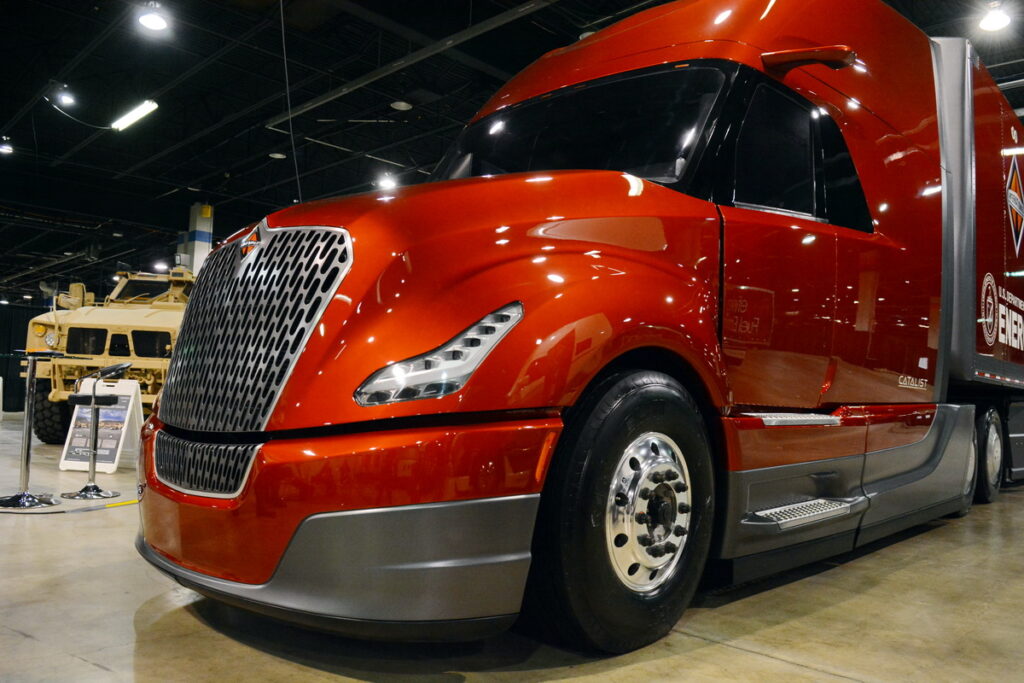
The DOE grants were matched by the participating teams, which was a stroke of genius, says Rick Mihelic, the director of emerging technologies studies at the North American Council for Freight Efficiency (NACFE). He was also directly involved in the development of the aerodynamic systems on the Peterbilt/Cummins team for SuperTruck 1.
“It was a 50/50 cost share between the OEMs and the Department of Energy, which I thought was a brilliant way to ensure technology that was developed under SuperTruck would actually make it into the marketplace,” he says.
Not all of what emerged from SuperTruck 1 made it into production – or ever will — but the project helped OEMs and fleets determine what was viable and what would remain a pipe dream. By the time SuperTruck 1 had wrapped up in 2015, the agency had identified 26 different technologies with the potential to succeed in the market within two to four years (2017-2019). An additional dozen technologies were pegged as potentially viable with five to ten years (2020-2025).
SuperTruck 1 technologies that have already been commercialized include downspeeding, intelligent torque management, neutral shifting on downgrades, predictive gear shifting, reduced rolling resistance tire compounds and designs, predictive GPS-based cruise control, trailer aerodynamics (side skirts, boat tails, gap fairings), lighter-viscosity lubricants, and more.
Longer-term technologies, those just starting to come to market, include improved combustion technologies (piston bowl designs and materials), advanced aerodynamics (active aero such as grille shutters and tractor-trailer gap reduction), battery-based idle reduction systems, waste heat recovery (turbo compounding), electrified engine components (compressors, coolant pumps, and fans), cameras replacing mirrors, and solar energy harvesting.
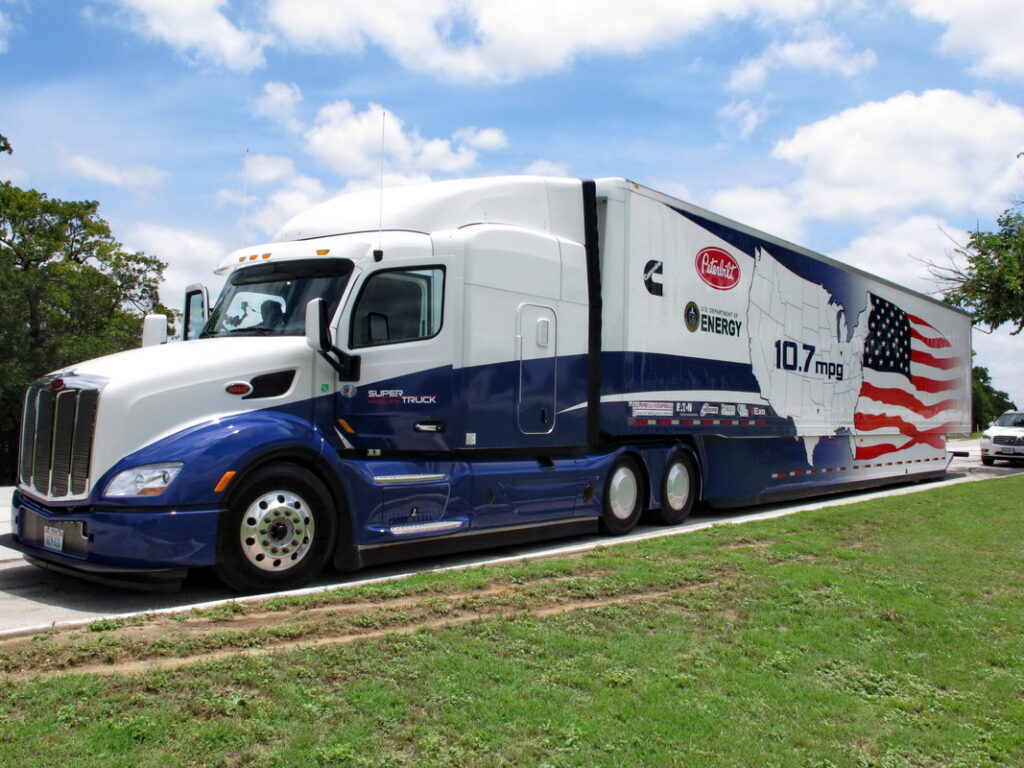
A unique moment in time
When the first SuperTruck program was announced in 2009, the industry was in a quite a state. We were a year into what would be a devastating recession. We were still reeling from the catastrophic EPA 2007 emissions regulations that saw the introduction of diesel particulate filters and massive reductions in fuel economy. OEMs had more on their minds that developing exotic fuel-saving technologies, and fleets were in survival mode. Nobody at the time was even remotely interested in new fuel-saving technologies.
OEMs, though, still had lots of science projects on the go, overshadowed by the push to meet EPA 2007. So, when DOE came around with scads of cash to bring these projects to life, the OEMs were well prepared.
“At the time, there were a lot of things on the shelf that had not yet been put into production,” Mihelic says. “There wasn’t much money going into R&D in 2009, so the DOE’s timing was great. It allowed OEMs to focus on aerodynamic research and to look really closely on real-world duty cycles, which at that time were not well understood. SuperTruck gave [OEMs] the opportunity to look at tractor-trailers as a complete system, which was something fairly new at the time.”
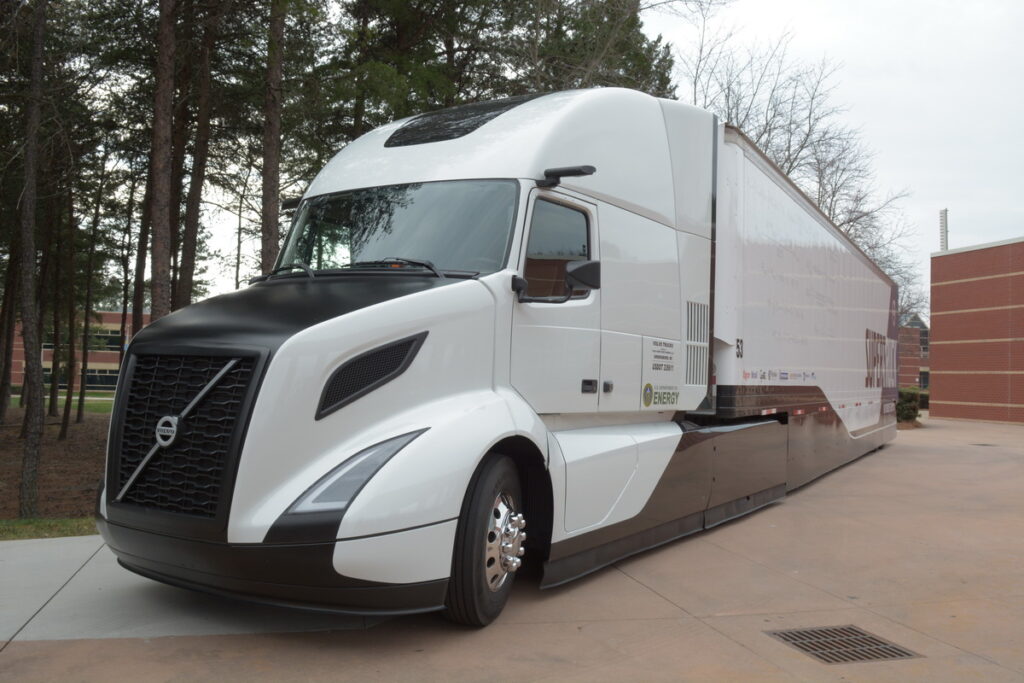
For obvious reasons, tractor makers get credit for work done to tractor systems, while trailer manufacturers get credit for enhancements to trailers. SuperTruck gave truck and trailer manufacturers a unique opportunity to collaborate on the whole vehicle. The results upended the thinking on tractor aero systems.
Dean Opperman, who at the time was the chief engineer for advanced vehicles and the SuperTruck group at Navistar, said his team engineered the aerodynamic design from back to front, starting with the trailer.
“Once we did the trailer, speaking in relative numbers, a 2-3% improvement on the tractor became an 8-10% improvement because of the overall reduction in drag on the rear of the trailer.”
Fine tuning the tractor and trailer aerodynamics would reduce drag, but currently no tractor OEM owns a trailer building business. Even if one did, trying to align something like Daimler-built tractors with Daimler-built trailers in the real world would be nearly impossible. However, current research into improving batter-electric veicle range to make the absolute most of a very limited energy supply could turn toward married tractor-trailer units in cases where it is logistically feasible such as private fleets with dedicated tractors and trailers.
Success stories
The SuperTruck 1 projects demonstrated what’s possible. The next step was turning the possible into the practical. After seven years of tinkering and toying with existing ideas and some revolutionary new ones, OEMs came away a whole new menu of options to offer energy-conscious customers. Here’s an abbreviated list of some of the technology that SuperTruck proved commercially viable since then and up to the present day.
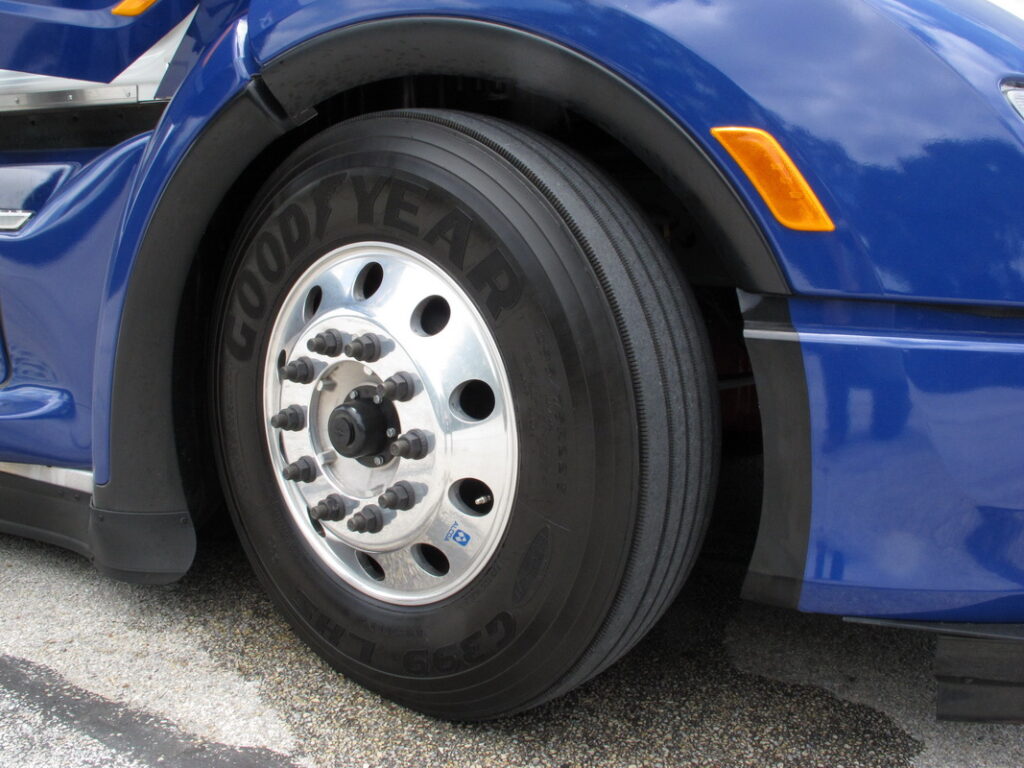
Advanced Aero: The most obvious development in each case was the aerodynamic work. All the OEMs went long on aero, and why not? It’s an easy target. The closer each could get to the ideal aerodynamic shape, something similar to a rain drop, the greater the gains were.
We saw tighter close-out around wheels, tractor underbody fairings, mirrors replaced with cameras, and changes to the width and slope of tractor hoods. These and other development can be found on current model trucks.
Trailer aero was a different story. All the participants developed full-height, full-length side skirts, highly sculpted nose pieces, and additional airflow modifiers for the rear of the trailer. Because of the potential for body damage resulting from day-to-day use of such designs, fleets would never accept the maintenance problems associated with that sort of side skirt. Some of today’s newer skirts, however, are taller than previous versions, suggesting fleets seem to be compromising between aero improvements and a slightly increased maintenance burden.
Smaller, lighter engines: With advanced aero treatments, low-rolling-resistance tires, and other friction-reducing technologies, SuperTruck engineers found they needed only an astonishing 100 horsepower to maintain 65 mph (104 km/h) on flat ground. That’s about a third of the horsepower required to keep a non-aero classic-styled truck pushing through the wind. Daimler and Volvo both used 11-liter engines in their trucks. Navistar used a 13-liter, and the Cummins/Peterbilt truck had a 15-liter engine.
All the engines were significantly downsped. The high-torque, mid-horsepower output proved ideal for fleets in truckload applications where typical gross vehicle weights seldom exceed 70,000 pounds (31,750 kg).
Daimler developed a 10.7-L engine platform specifically for SuperTruck, using hybridization, a waste heat recovery system, and more. The intent was to meet or exceed the 50% brake thermal efficiency target set by DOE. With the installed technology it succeeded, but the engine is not yet commercially viable.
Since SuperTruck 1, Volvo has made significant inroads with its D11 engine, and fleet users report very satisfactory performance in suitable applications.
Hotel loads: SuperTruck opened new windows of opportunity into the off-duty life of trucks, and the challenges faced by drivers in maintaining comfortable living environment. Solutions revealed by SuperTruck 1 include the use of lithium-ion batteries for faster charging and longer discharge cycles, super-capacitors rather than lead-acid batteries for starting, and solar panels for adding charging capacity.
Some work was also done to improve cab insulation to thermally manage the cab environment without added strain on the HVAC system. All of these technologies are currently available, though some remain a little pricy for some fleets.
Powertrain management: Adaptive and predictive cruise control systems are perhaps two of the most obvious enhancements to emerge from SuperTruck 1. As is always the case, the systems have been improved upon since 2016 and are now offered in some form or another by all OEMs.
Closer engine transmission integration was already underway when SuperTruck launched, but additional refinements emerged, including downspeeding, torque management, and idle coasting.
There was a huge amount of work done on optimizing engine efficiency through mild hybridization (regen braking, 48-volt auxiliary components such as pumps, fans and compressors). Such technologies are not yet available, but will be in some cases by model year 2023 and beyond.
The U.S. DOE set specific energy-saving targets for SuperTruck I, and they were all shattered by the four SuperTruck teams. Actual fuel economy (which really the goal of the project) results reported by each of the teams exceeded 10 mpg on the official test run. Cummins/Peterbilt reported 10.7, Daimler and Volvo both topped 12 mpg, and Navistar checked in with 13 mpg.
The goal of SuperTruck 1 was not simply to get the highest mpg on the test run, but to get truck and engine makers thinking beyond products that can be commercialized in three to five years. Many of the technologies developed for the project have already found their way into current OEM offerings. Others are a model-year or two away. Others may be 10 years out, but SuperTruck 1 gave engineers and consumers an unprecedented opportunity to see which technologies have potential, and which do not.
Earlier super advances
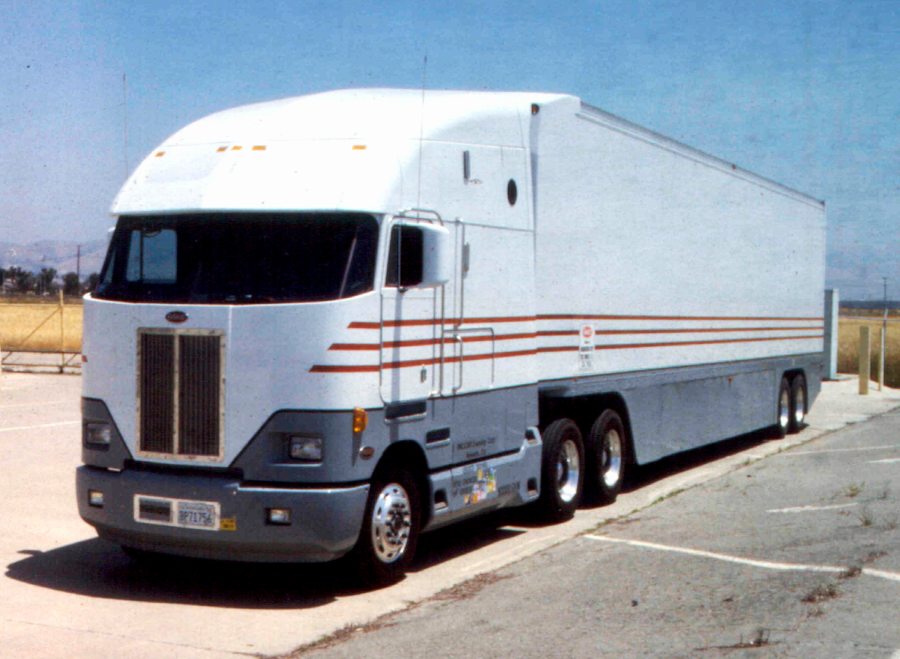
All that said, it’s worth noting that back in 1990 Peterbilt came to market with the odd-looking (for the time) Model 372 cab-over tractor that resembled a football helmet. Some referred to it as the Darth Vader truck. In a cross-country fuel economy test, it clocked 10.49 mpg over 3,300 miles with a gross weight of 71,200 pounds. It had a 10-liter Caterpillar 3176 engine making 325 hp. Most importantly, the tractor pulled a fully aero-tuned trailer during the test, one that looks surprising similar to what engineers did to the trailers shown in SuperTruck 1.
And I’d be remiss if I didn’t mention my friend and former co-worker, John Tilleart. At around the same time, he won a government-sponsored fuel economy challenge running his R-model Mack between Bowmanville and Cornwall, Ontario, at a then-shocking 10.1 mpg. In his case, it wasn’t aero that won the day, but driver discipline and judicious use of the throttle pedal.
SuperTruck II is just now winding down. The work is done and some top-level results of the project can be found on the Department of Energy website. A full public unveiling will take place sometime in 2022. Like SuperTruck 1, some of those technologies will make it to market with a couple of model-years. Some will lake a little longer.
Much of what will be unveiled will be helpful in meeting the very challenging GHG Phase 2 rules for 2024 and 2027.
Have your say
This is a moderated forum. Comments will no longer be published unless they are accompanied by a first and last name and a verifiable email address. (Today's Trucking will not publish or share the email address.) Profane language and content deemed to be libelous, racist, or threatening in nature will not be published under any circumstances.
Great story. Love the mention of the R model Mack.With a light foot you could get great fuel mileage.Thank you.
Tesla Semi will simply eat them for breakfast.
Grear article. Thank you.